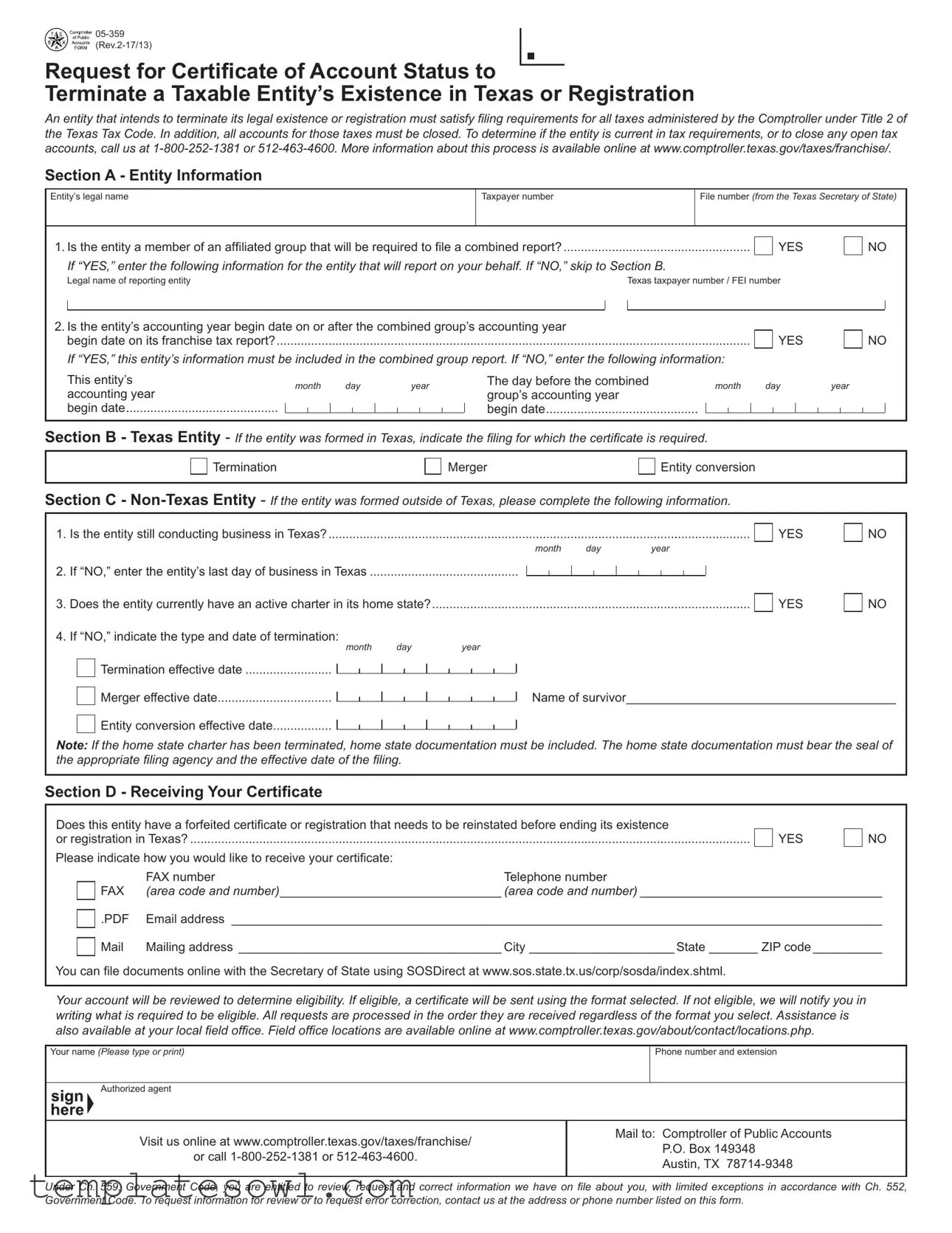1. What is the purpose of the 5 359 Texas form?
The 5 359 Texas form, known as the Request for Certificate of Account Status, is used by entities that wish to terminate their legal existence or registration in Texas. This form ensures that all tax obligations are met and that there are no outstanding accounts before the entity is officially dissolved or removed from registration records.
2. Who should fill out this form?
This form is intended for individuals and organizations, including corporations and limited liability companies, that have completed all necessary tax filings and are looking to formally end their status in Texas. It's crucial that all affiliated businesses are accounted for if the entity is part of a larger group.
3. What information is required in Section A?
Section A requires basic information about the entity, such as its legal name, taxpayer number, and file number from the Texas Secretary of State. It also includes questions about whether the entity is part of a combined group for franchise tax reporting, which helps determine the correct tax reporting method.
4. What if the entity has not conducted business in Texas recently?
If the entity was formed outside Texas and has not conducted business there in some time, the form asks for the last day of business and whether the entity still has an active charter in its home state. This information is essential for processing the termination appropriately.
5. How does a forfeited certificate affect the termination process?
If the entity has a forfeited certificate or registration, this must be reinstated before ending the existence in Texas. The form provides options for how to receive the certificate once it has been issued, including by fax, email, or standard mail.
6. What documentation is required if the home state charter has been terminated?
In cases where the entity's home state charter has been terminated, it is necessary to include documentation from the home state. This documentation must have the official seal from the appropriate filing agency and indicate the effective date of filing. This requirement helps verify the entity's status in its home state.
7. How can I submit this form or get assistance?
The 5 359 form can be submitted by mailing it to the Comptroller of Public Accounts at the provided address. For online submissions or assistance, individuals can use the SOSDirect website for Texas Secretary of State filings. Local field offices are also available for help and can be located online.
8. How long does it take to receive the certificate after submission?
Requests for the certificate are processed in the order they are received. The time frame for receiving the certificate may vary based on demand and the specific details of the request. If the entity is not eligible for termination, a written notification outlining the necessary steps will be sent.
9. Where can I find additional information about the process?
Additional information about terminating an entity's existence or registration can be found on the Texas Comptroller's website. This site provides guidance on tax responsibilities and additional resources to help in the process, ensuring that all requirements are met before filing the termination request.


































